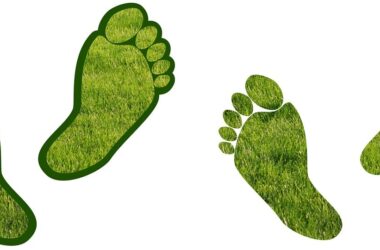Carbon sequestration is the process of capturing and storing atmospheric carbon dioxide (CO2) to prevent it from entering the atmosphere and contributing to global warming and climate change. This process can occur naturally, such as in forests and wetlands, or through technological means, such as carbon capture and storage (CCS).
Importance of Carbon Sequestration
Carbon sequestration is crucial in the fight against climate change. By reducing the amount of CO2 in the atmosphere, we can mitigate the greenhouse effect and slow down global warming. It is also an essential component of many climate change mitigation strategies, including the goal to achieve carbon neutrality.
The Role of Human Activity in Carbon Emissions
Human activities, particularly the burning of fossil fuels for energy, are the primary source of carbon emissions. Deforestation, industrial processes, and agriculture also contribute to these emissions. Carbon sequestration is a way to offset these emissions and reduce our carbon footprint.
Types of Carbon Sequestration
Natural Carbon Sequestration
Natural carbon sequestration occurs in ecosystems such as forests, wetlands, and oceans. These ecosystems act as carbon sinks, absorbing more CO2 than they emit. Protecting and restoring these ecosystems is crucial for natural carbon sequestration.
Technological Carbon Sequestration
Technological carbon sequestration involves capturing CO2 from sources such as power plants and industrial facilities and storing it underground in geological formations. This can also include direct air capture (DAC) technologies that remove CO2 directly from the atmosphere.
Natural Carbon Sequestration
Forests and Their Role
Forests are a crucial component of natural carbon sequestration. Trees absorb CO2 from the atmosphere during photosynthesis and store it as carbon in their biomass. Protecting existing forests and reforesting degraded lands can significantly contribute to carbon sequestration.
Wetlands and Peatlands
Wetlands and peatlands are other important carbon sinks. They store carbon in their soil and vegetation. However, draining and converting these areas for agriculture and other uses release stored carbon back into the atmosphere.
Oceans as Carbon Sinks
Oceans also play a vital role in carbon sequestration. They absorb a significant portion of the atmospheric CO2 through the process of oceanic uptake. This helps regulate the climate and maintain the carbon balance.
Technological Carbon Sequestration
Carbon Capture and Storage (CCS)
CCS is a technology that captures CO2 emissions from sources such as power plants and industrial facilities and stores them underground in geological formations. This prevents the CO2 from entering the atmosphere and contributing to climate change.
Direct Air Capture (DAC)
DAC is a technology that captures CO2 directly from the atmosphere. It uses fans to pull air through filters that capture CO2, which is then stored or used in various applications.
Bioenergy with Carbon Capture and Storage (BECCS)
BECCS is a technology that combines bioenergy production with CCS. It involves capturing CO2 emissions from bioenergy plants and storing them underground. This process can result in negative emissions, as the CO2 captured is more than the emissions produced during bioenergy production.
Challenges and Solutions
Technical Challenges
One of the significant challenges of carbon sequestration is the technical complexity and cost of implementing CCS and DAC technologies. Research and development are essential to improve the efficiency and reduce the cost of these technologies.
Economic Challenges
The economic viability of carbon sequestration projects is another challenge. Incentives and subsidies are needed to make these projects financially attractive to investors and companies.
Policy and Regulation
Effective policy and regulation are crucial for the success of carbon sequestration initiatives. Governments need to create a conducive environment for the growth and development of these technologies through regulations and support mechanisms.
The Future of Carbon Sequestration
Innovations and Developments
The future of carbon sequestration lies in innovations and developments in technology and practices. Continued research and development are necessary to improve the efficiency and cost-effectiveness of carbon sequestration technologies.
International Cooperation and Agreements
International cooperation and agreements are essential for the success of carbon sequestration initiatives. Countries need to work together to share knowledge, technology, and resources to achieve global carbon reduction goals.
Conclusion
Carbon sequestration is a critical tool in the fight against climate change. It offers a way to offset carbon emissions and reduce our carbon footprint. Both natural and technological methods of carbon sequestration are essential, and a combination of the two is necessary to achieve significant results. While challenges exist, with the right policies, incentives, and international cooperation, carbon sequestration can play a significant role in mitigating climate change and protecting our planet for future generations.
Similar Articles
- Carbon Credits: A Comprehensive Guide to Offset Emissions
- Carbon Insetting: A Comprehensive Guide
- Carbon-Neutral Journeys: Paving the Way Towards a Sustainable Future
Frequently Asked Questions (FAQs) about Carbon Sequestration:
What is carbon sequestration?
Carbon sequestration is the process of capturing and storing atmospheric carbon dioxide (CO2) to prevent it from entering the atmosphere and contributing to global warming and climate change.
How does carbon sequestration work?
Carbon sequestration can occur naturally in ecosystems like forests, wetlands, and oceans, which act as carbon sinks by absorbing more CO2 than they emit. It can also be done technologically through methods like Carbon Capture and Storage (CCS), Direct Air Capture (DAC), and Bioenergy with Carbon Capture and Storage (BECCS).
What is the importance of carbon sequestration?
Carbon sequestration is crucial in the fight against climate change. By reducing the amount of CO2 in the atmosphere, it can mitigate the greenhouse effect and slow down global warming. It’s an essential component of many climate change mitigation strategies.
What are the main technological methods of carbon sequestration?
The main technological methods of carbon sequestration include Carbon Capture and Storage (CCS), Direct Air Capture (DAC), and Bioenergy with Carbon Capture and Storage (BECCS).
What are the benefits of carbon sequestration?
The benefits of carbon sequestration include mitigating climate change, reducing atmospheric CO2 levels, and potentially providing negative emissions if more CO2 is captured than emitted in the process.
What are the challenges associated with carbon sequestration?
The challenges associated with carbon sequestration include technical complexity, high costs, economic viability, and the need for effective policy and regulation.
How can individuals contribute to carbon sequestration?
Individuals can contribute to carbon sequestration by planting trees, protecting natural ecosystems, reducing their carbon footprint, and supporting policies and initiatives that promote carbon sequestration.
How do forests contribute to carbon sequestration?
Forests absorb CO2 from the atmosphere during photosynthesis and store it as carbon in their biomass. Protecting existing forests, reforesting degraded lands, and practicing sustainable forestry can significantly contribute to carbon sequestration.
What is the role of oceans in carbon sequestration?
Oceans play a vital role in carbon sequestration by absorbing a significant portion of the atmospheric CO2 through the process of oceanic uptake. This helps regulate the climate and maintain the carbon balance.
Can carbon sequestration reverse climate change?
While carbon sequestration can significantly reduce atmospheric CO2 levels and mitigate the effects of climate change, it’s not a silver bullet. It must be part of a broader strategy that includes reducing emissions, transitioning to renewable energy, and adapting to the changes already occurring.
These FAQs cover various aspects of carbon sequestration, from its definition and importance to its benefits, challenges, and individual contributions.










